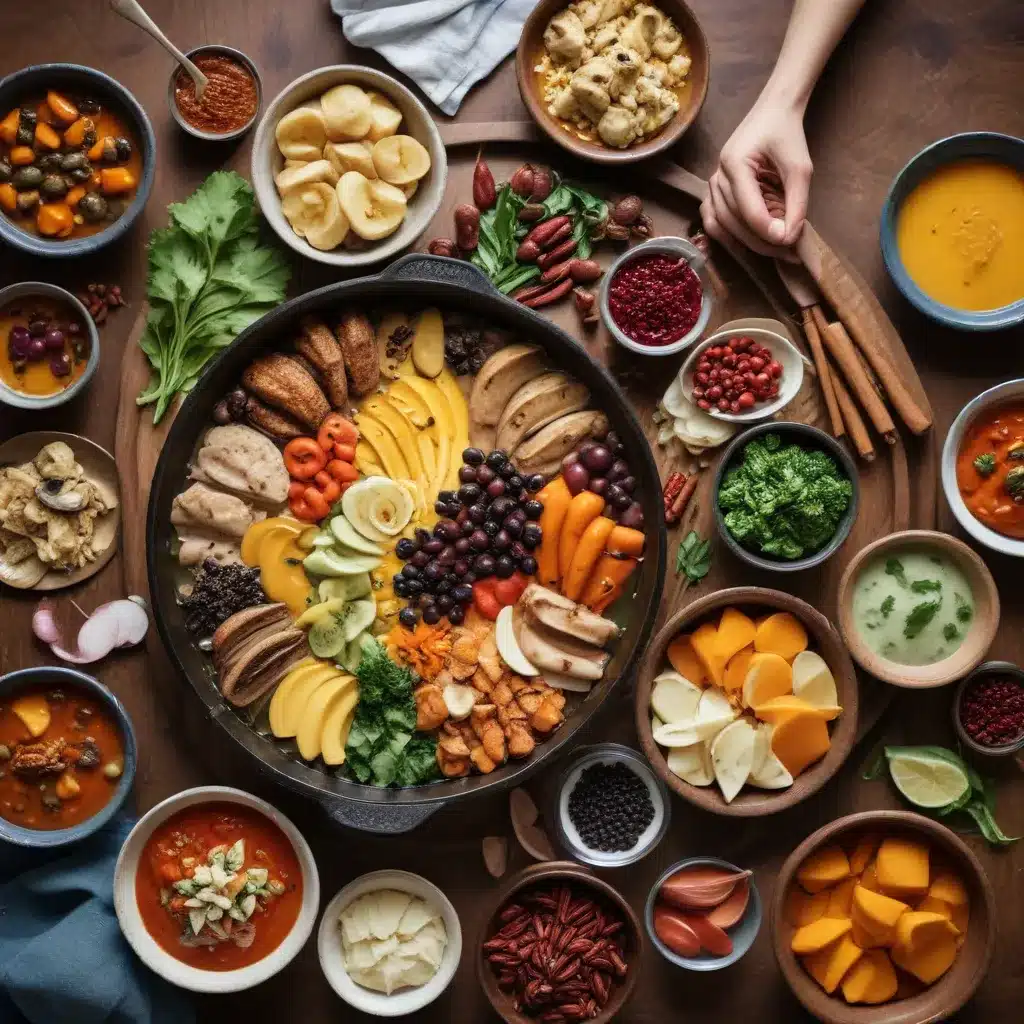
Exploring the Rich Tapestry of Flavors from Around the World
In a world of culinary homogeneity, where fast food chains and mass-produced ingredients often dominate, there is a growing movement toward embracing the diverse flavors and traditions that make our global community truly unique. As seasoned culinary professionals, we have the privilege of diving deep into the rich cultural histories and innovative culinary perspectives that shape the way we cook and eat.
Celebrating the Melting Pot of Buenos Aires
The bustling city of Buenos Aires serves as a prime example of a culinary melting pot, where waves of immigrants from around the world have left an indelible mark on the local cuisine. As Serious Eats notes, the city’s cultural identity is often oversimplified as a tale of Italian and Spanish influence, but the reality is much more diverse.
Wandering the streets of Buenos Aires, one can uncover a tapestry of flavors and traditions, from the Levant to East Asia and beyond. As culinary writer Kevin Vaughn shares, “Porteño cuisine is wildly misunderstood. More often than not, it’s distilled into fables of Italian and Spanish immigration. And while it’s undeniable that Italo-Hispano influences leave the most visible mark on Buenos Aires kitchens, the history of immigration is vast and interwoven.”
Vaughn’s exploration of the city’s culinary landscape reveals a vibrant and ever-evolving food scene that celebrates the diverse cultural backgrounds of its inhabitants. From the traditional Catamarcan-style empanadas at La Cocina to the playful fusion dishes at Argot, where mbeju (a mandioca starch pancake) is topped with kimchi and a fried egg, the city’s chefs and artisans are redefining what it means to cook and eat in Buenos Aires.
Embracing the Global Palate at International House
The spirit of culinary diversity is also alive and well at International House (I-House) in Berkeley, California, as evidenced by the institution’s efforts to celebrate the rich cultural tapestry of its residents. As the I-House Berkeley blog reveals, the I-House community has embraced the opportunity to share its diverse culinary traditions through initiatives like the I-House Cookbook.
The “Chef’s Chapter” of the I-House Cookbook, guided by Executive Chef Abigail Serbins, showcases the multitude of flavors and techniques represented in the I-House kitchen. From the flavors of Brazil to the culinary influences of Africa, Asia, and beyond, this chapter invites readers to “savor and explore these delightful dishes” that reflect the global diversity of the I-House community.
As I-House resident Okeiroegbu notes, “International House is a laboratory for a new kind of experiment – the day-to-day practice of international fellowship among men and women. It’s up to us, the residents, to continue building on this legacy and share our culinary traditions with the world.”
Bridging Cultures through Homemade Recipes
The passion for sharing cultural diversity through food extends beyond the boundaries of renowned institutions and into the homes of dedicated home cooks, like Lilian Vallezi of Simple Living Recipes. Vallezi’s culinary journey began with her Brazilian roots, but has since expanded to encompass a global palate, blending the vibrant flavors of her heritage with the diverse influences she has encountered through her travels and culinary education.
“From the vibrant flavors of Brazil to the diverse palate of the United States and global cuisine, my dishes showcase a fusion of cultural influences that go beyond borders,” Vallezi explains. Her mission to “simplify your cooking experience by providing recipes that are not only flavorful but also uncomplicated” has resonated with home cooks around the world, as she shares her unique perspective on bridging cultural divides through the universal language of homemade food.
Embracing the Richness of Global Cuisine
As culinary professionals, we have the privilege and responsibility of championing the rich diversity of global cuisines. Whether it’s exploring the hidden culinary gems of Buenos Aires, celebrating the multicultural tapestry of the International House community, or sharing homemade recipes that bridge cultural divides, our role is to guide our readers on a journey of culinary discovery.
By highlighting the stories behind the ingredients, techniques, and traditions that shape the world’s diverse food cultures, we can inspire our readers to expand their culinary horizons, embrace new flavors, and connect with the global community through the shared experience of cooking and eating.
Practical Tips for Exploring Global Flavors
Embark on your own culinary adventure by implementing these practical tips:
-
Seek Out Specialty Ingredients: Challenge yourself to venture beyond the conventional grocery aisles and explore international markets, specialty shops, or even online retailers to source unique ingredients that reflect the diversity of global cuisines.
-
Experiment with New Techniques: From mastering the art of hand-rolled empanadas to perfecting the delicate balance of spices in a Southeast Asian curry, immerse yourself in the techniques that define regional culinary traditions.
-
Travel Through Your Taste Buds: Whether it’s whipping up a batch of traditional alfajores from Argentina or recreating the comfort of a Brazilian pão de queijo (cheese bread), allow your kitchen to serve as a portal to explore the world’s diverse food cultures.
-
Connect with Global Communities: Engage with communities, both online and in your local area, that celebrate the richness of global cuisines. Attend cultural festivals, cooking classes, or join virtual culinary exchanges to broaden your understanding and appreciation for international food ways.
-
Embrace the Spirit of Culinary Fusion: Inspired by the melting pot of Buenos Aires or the multicultural tapestry of International House, don’t be afraid to take culinary risks and blend flavors, techniques, and ingredients from various cultural backgrounds to create your own unique culinary expressions.
By embracing the global diversity of flavors, we can not only expand our culinary horizons but also foster a deeper understanding and appreciation for the rich tapestry of food cultures that make our world so vibrant and interconnected. Join us on this journey of culinary exploration and celebration.


